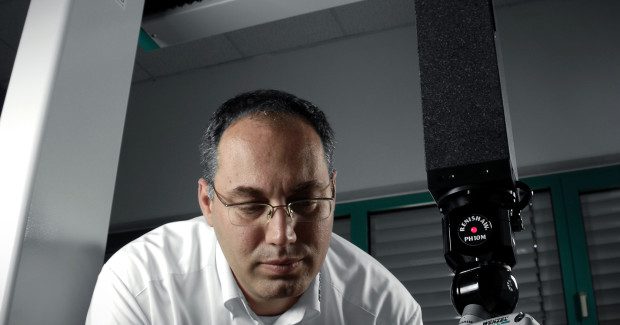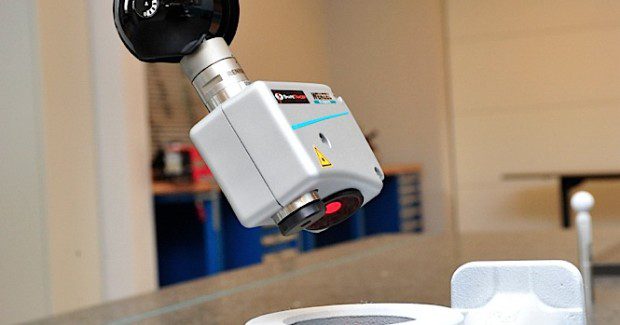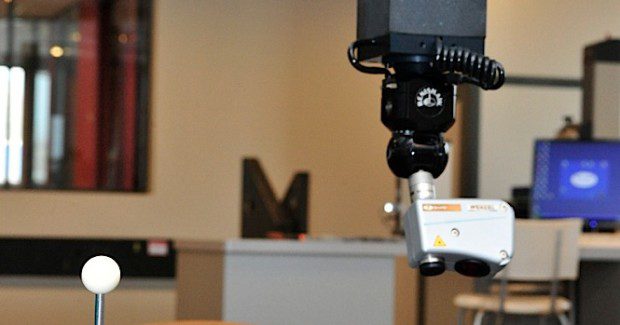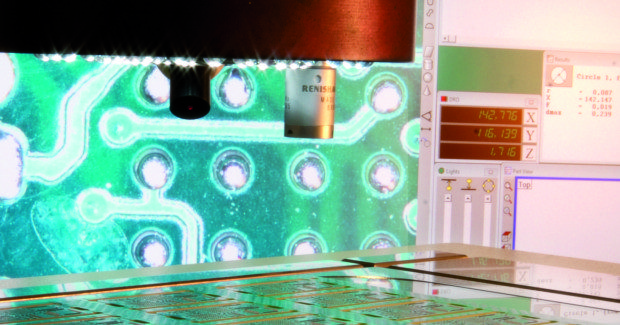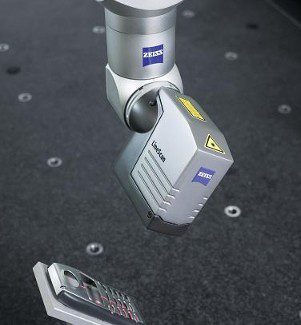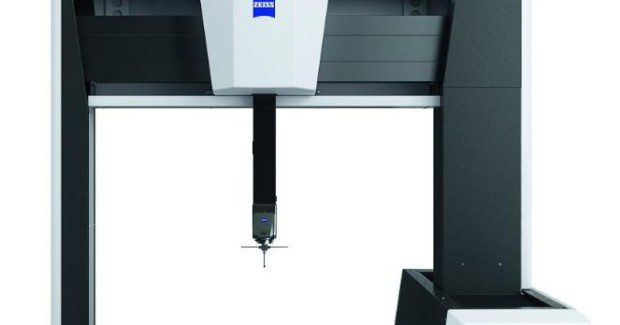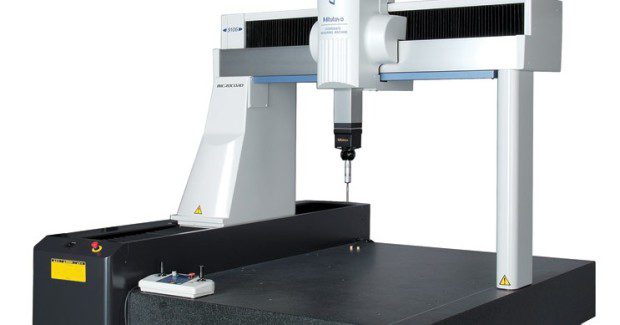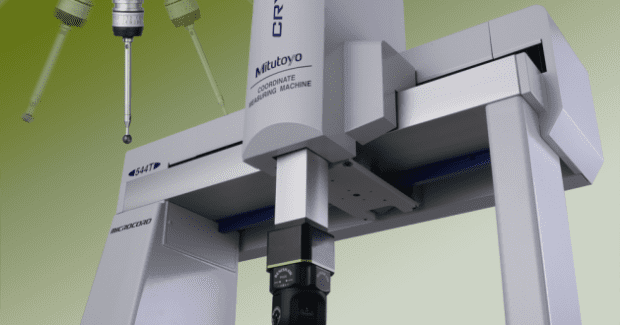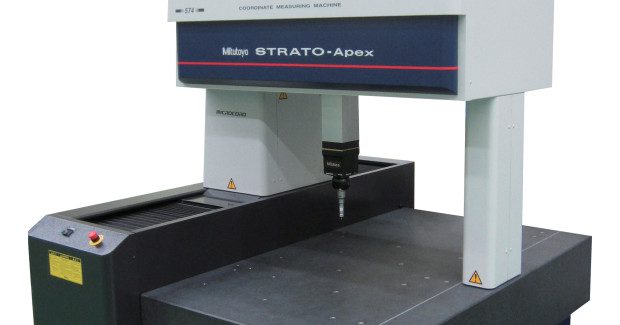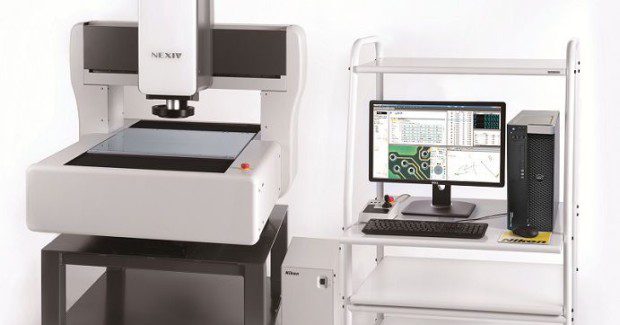What’s New in Coordinate Measuring Machines
Here are some of the latest technologies that are bringing new capabilities to CMM applications.
Posted: March 5, 2015
According to Frost & Sullivan, global coordinate measuring machine (CMM) sales are estimated to exceed $1.8 billion in 2015, with automotive CMM sales reaching approximately $625 million and aerospace CMM sales at approximately $350 million. Here are some of the latest technologies that are bringing new capabilities to CMM applications.
CMM-BASED LASER SCANNER
The requirements for quality assurance have increased with 3D technologies. Previously all major dimensions could be taken from a 2D drawing for tactile measurement, which is no longer the case today. Modern 3D drawings include little in the way of explicit dimensions. The curves of the free-form surfaces are almost impossible to verify, using traditional tactile measurement techniques.
Wenzel America, Ltd. (Wixom, MI) provides advanced 3D measuring technology to solve these measuring issues with their “Shapetracer” high-precision laser line scanner that was developed together with Pointmaster evaluation software from Wenzel Knotenpunkt. Shapetracer is an extremely compact scanner that can be connected to the Renishaw PH6M or PH10M probe head via the Renishaw Autojoint connection and, consequently, can be adapted to almost every coordinate measuring machine. In conjunction with the PH10M rotary swivel head, five-axis measurement is available.
From the outset, the development team decided that the laser line scanner should be used on a coordinate measuring machine with a stable support table and not just on a mobile measuring arm. Higher production applications require automatic measurement of several workpieces which is only possible on a large stationary measuring machine. In addition, if probe and sensor changing is to be automated, the Shapetracer can be cabled via the Renishaw Multiwire connection so that its storage, together with other measurement heads, is easily accommodated.
In operation, scanning of the workpiece, where the operator is supported by the Pointmaster kinematics module and the software, takes over the full command of the measuring process. The measuring machine can be completely and virtually mapped so that simulations of the measuring process are also possible. A point cloud is generated from the scan data and, from that a polygon model with homogenous surface is computed (triangulation). Finally, the polygon model is converted into a CAD model in IGES format.
Quality technicians can receive the CAD data, also in IGES format, from the design department. Both datasets are aligned and compared with the software. Pointmaster highlights the differences between the two models in different colors where the variances in dimension can be discretionally selected and marked by flags. All dimensions are listed and contrasted in the evaluation protocol. This applies particularly to components with complex inner workings. These parts must be dissected in order to simulate both the external and internal contours.
With the Pointmaster software it is no problem to construct a model from the component scanned in different directions. The system provides a series of functions, both for aligning the components and for manufacturing homogeneous contour transitions in order to remove any cut surfaces and to add consecutively scanned areas. The assembly of the contours does not rely on mathematical tricks, but always uses real data so a highly precise scanner is a prerequisite. After the CAD model has been generated the finest surface structures become visible. Ingrained lettering, for example, appears distinctly and clearly legible on the display screen.
“Shapetracer provides a measurement accuracy of better than 20 µm,” explains Giles Gaskell, the applications manager for 3D imaging products at Wenzel. “This value is not a theoretical specification based on specified accepted boundary conditions. This value was proven metrological with the aid of verified calibration figures. It is essential to be aware that, apart from the camera resolution, the accuracy of a laser sensor is primarily dependent on the depth of scanning. The greater the scanning depth, the more inaccurate the result. The Shapetracer was therefore optimized for a scanning depth of 60 mm in order to obtain the specified accuracy.”
An overview of the Shapetracer system includes:
- Dimensions: 100 mm x 68 mm x 58 mm
- Working clearance: 40 mm
- Scan width: 35 mm
- Scan depth: 60 mm
- Scan capacity: 48,000 points/sec
- Measurement accuracy: better than 20 µm
Giles adds, “Because of its compact design, the Shapetracer is ideal for mounting in sensor changer systems. Consequently any conventional measurement machine can easily be upgraded to become a multi-sensor machine.
Wenzel Group GmbH & Co. KG (Wiesthal, Germany) is one of the leading manufacturers of coordinate measuring machines. Wenzel America is headquartered in Wixom, is a wholly owned subsidiary of Wenzel Group, and is the number three supplier of both traditional CMMs and GMM gear measuring machines to the North American metrology market, providing a variety of unique 3D imaging technologies that include the ScanTec™ non-contact white light optical measuring system, the exaCT™ integrated computed tomography workstation, MobileScan3D® mobile CNC Measurement System and the Shapetracer™ 3D laser line scanner.
Wenzel America also provides OpenDMIS™, the metrology industry’s most complete open architecture metrology software. The main customers are in the automotive and aerospace industries, mechanical engineering, electrical motor manufacturing and sub-contractors to these sectors. With subsidiaries in Switzerland, France, United Kingdom, Netherlands, China, USA, Singapore and India, Wenzel employs 600 people worldwide.
Wenzel America, Ltd., 47000 Liberty Drive, Wixom, Michigan 48393, 248-295-4300, Fax: 248-295-4301, [email protected], wenzelamerica.com.
ADD LASER INSPECTION TO CMM CAPABILITIES
Heidenhain Corporation (Schaumburg, IL) is excited to announce the IK 5000 QUADRA-CHEK (version 3.1), the latest release of a PC-based metrology software solution for 2D and 3D measuring tasks on inspection machines. This universal PC package solution includes the integration of the Keyence LK-G5000 series laser and is now available to provide advanced functionality for both new and used quality control inspection equipment.
Notable new features within the IK 5000 3.1 metrology software include:
- The ability to communicate with Optimet and Keyence lasers, providing laser support for a large scope of applications.
- Enhanced 3D profile fit algorithms, speeding up part fits by up to 5X.
- Ability to export measured features in the STEP format (including 3D features).





